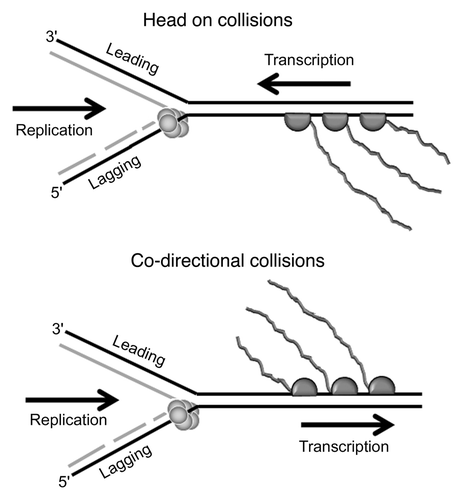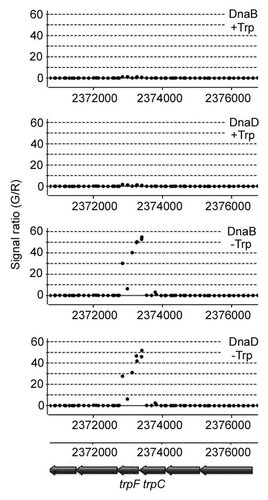Figures & data
Figure 1 Schematic representation of head-on and co-directional collisions between replication and transcription. In head-on collisions the replicative helicase and the RNAP translocate along the same strand (lagging strand) but in opposite directions. In co-directional collisions the helicase and the RNAP translocate in the same direction but along opposite strands, lagging and leading strands, respectively.

Figure 2 Association of the replication restart proteins with the trp locus in B. subtilis strain 168, grown in the presence and absence of tryptophan. Samples from cultures grown in the presence or absence of tryptophan (40 mg/mL) in rich media were analysed by ChIP-chip, as described by Merrikh et al.Citation6 Strong association of DnaD and DnaB with the trp locus was detected only when cells were grown in the absence of tryptophan, indicating that the transcriptional activation of the trp locus results in replication-transcription conflicts that lead to the intervention of the replication restart machinery.
